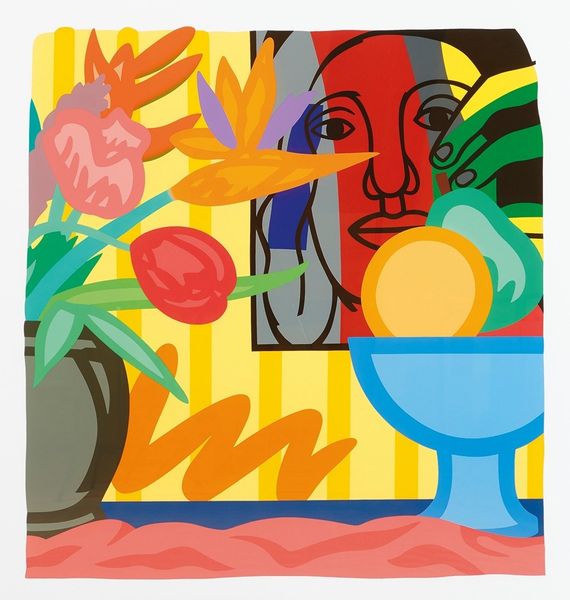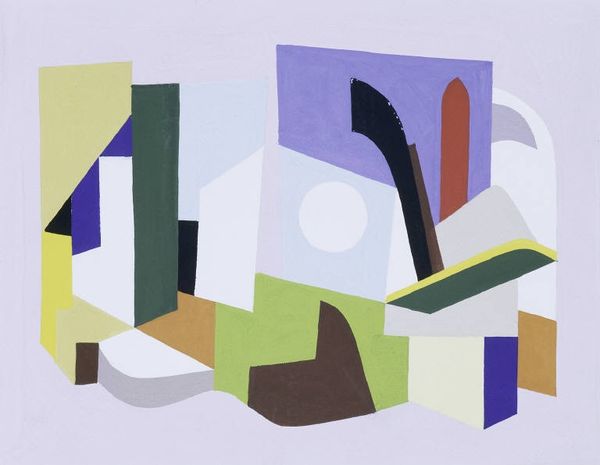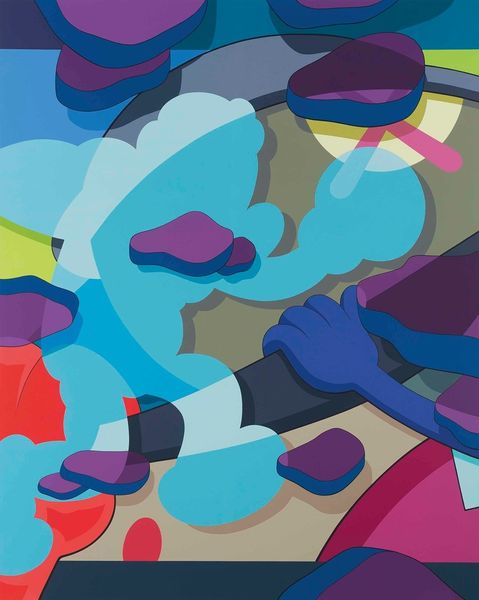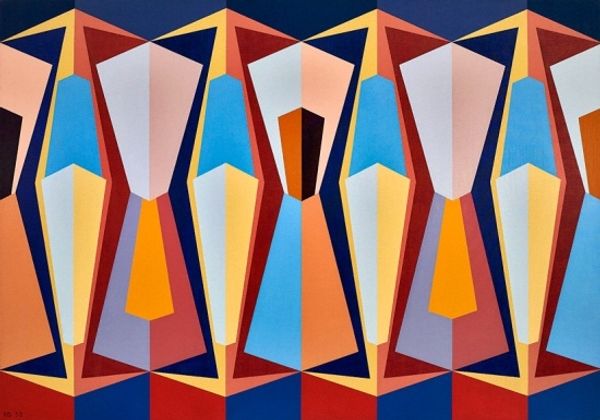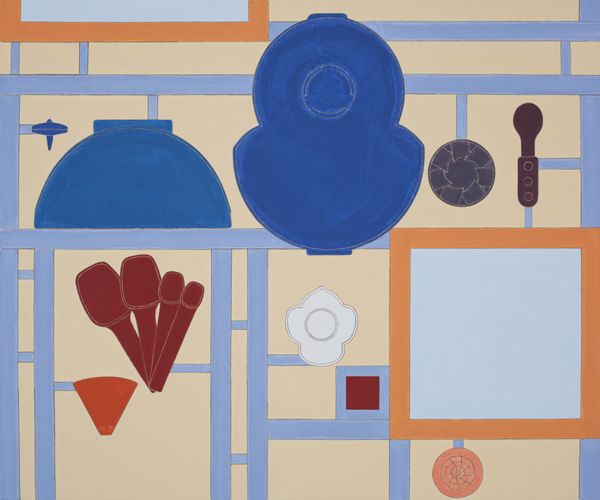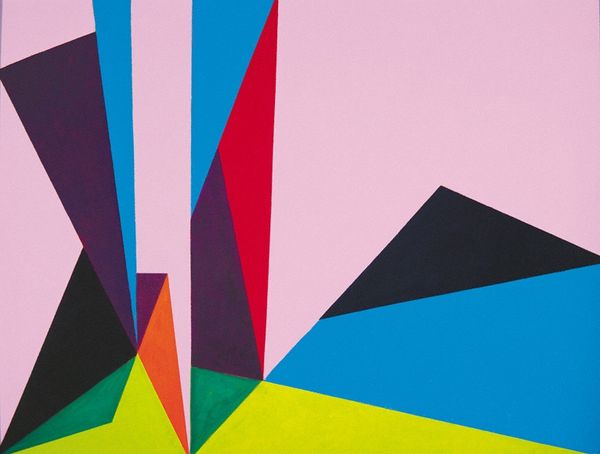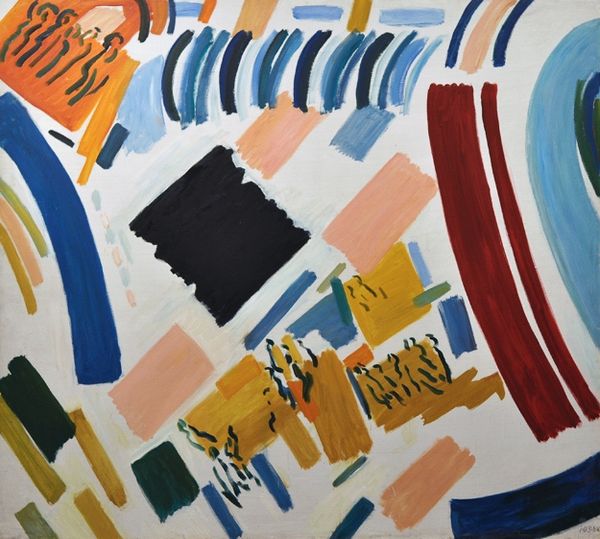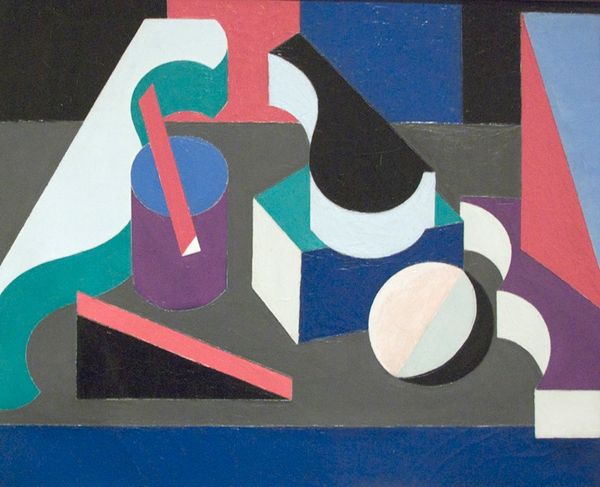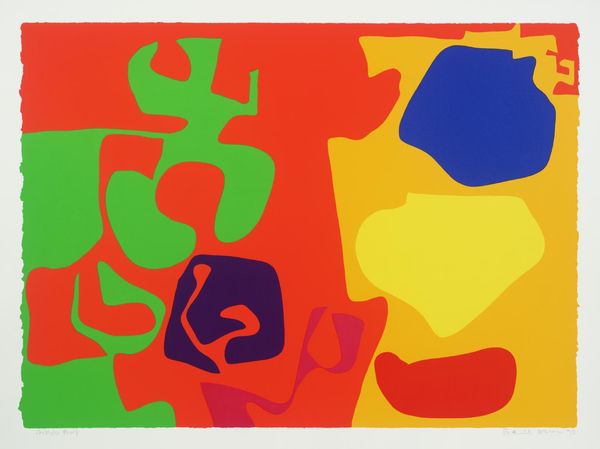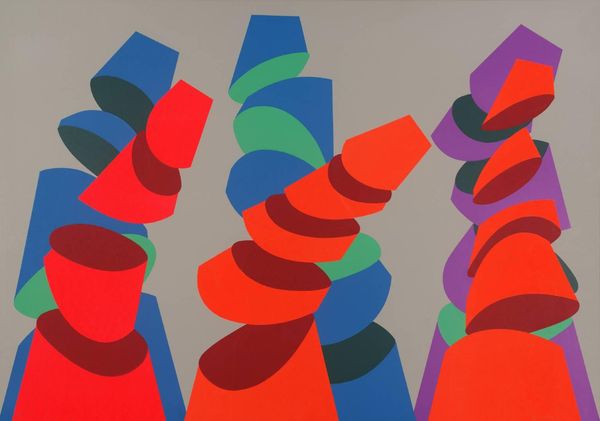
Copyright: Modern Artists: Artvee
Curator: Look at this piece: Tom Wesselmann's "Still-Life with Blowing Curtain" from 1999. Wesselmann, firmly entrenched in the Pop Art movement, offers a bold take on the traditional still life. Editor: My first impression is…deliberately artificial. The shapes are so flattened, the colors so vivid. It feels like a still life reimagined for a billboard. Curator: Exactly. The work seems to push back against notions of artistic genius, especially considering Wesselmann's approach to his materials. He primarily uses acrylic on canvas, but it is rendered almost mechanically, with little trace of the artist’s hand evident in the brushwork. Editor: It seems like Wesselmann's playing with art history and consumerism all at once. The title tells me its “fine art” while those clean lines and hyper-saturated colors are giving me more of a commercial vibe. Pop Art critiqued mass media's visual language through material interrogation. How do materials further that in the artist’s approach? Curator: By subverting our expectations. Look closely at the ‘curtain’. Its glossy sheen—achieved, ironically, with acrylic—mirrors the manufactured finish of consumer goods. It suggests the triumph of artifice over nature, and is quite provocative given the history of still life as demonstrating artists abilities to accurately mimic nature on canvas. Editor: True! It also speaks to post-war America, and that societal shift in valuing consumerism. The flattening of form and that bold palette makes me feel that societal transformation, as well as the politics of image making and dissemination. What Wesselmann creates is a powerful statement on how consumer culture transformed artistic expression. Curator: Precisely. Ultimately, what began with Wesselmann's early subversion of the expressive, gestural touch evolves into a deeper exploration of the processes and contexts of artistic production. Editor: It encourages us to question not just what we see, but *how* it’s made, how it circulates, and the values that are driving its making. A deceptively simple-looking artwork, offering a complex cultural critique.
Comments
No comments
Be the first to comment and join the conversation on the ultimate creative platform.
